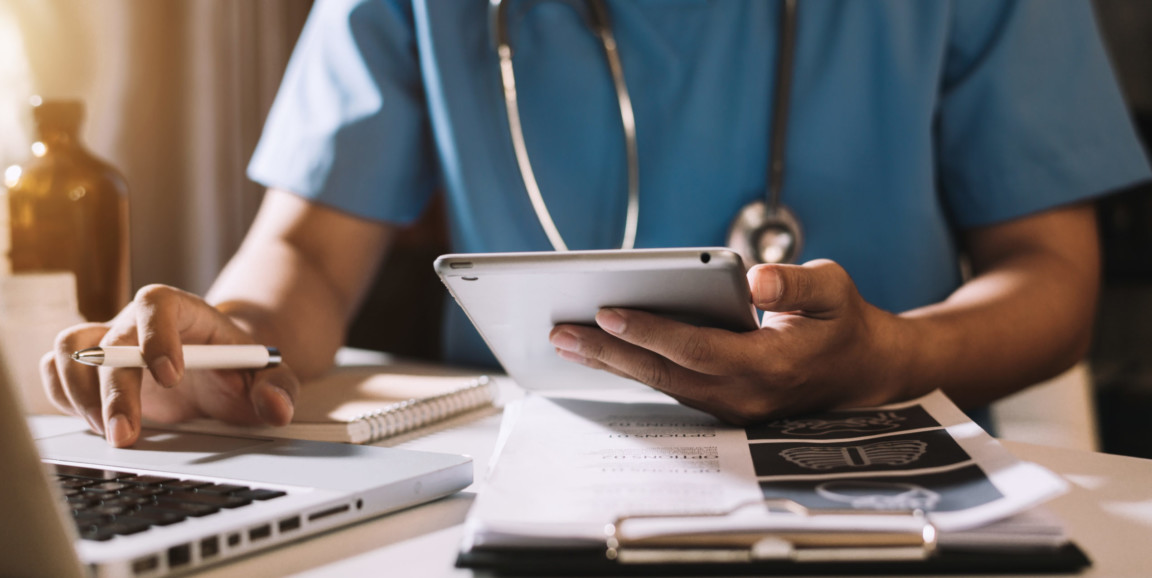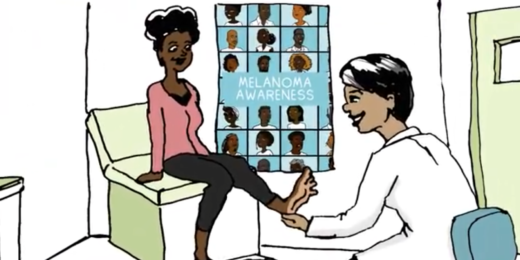It's no secret that older folks and those living in assisted-care facilities have had to exercise more caution during the COVID-19 era. But by protecting themselves against the virus, through isolation and fewer in-person interactions, they might be inadvertently increasing another risk: skin cancer.
Studies and data have shown that stricter protocols to reduce potential exposure for older people, in addition to a dip in clinic visits for fear of contracting COVID-19, resulted in a significant decrease in preventative cancer screens.
Kavita Sarin, MD, PhD, associate professor of dermatology at Stanford Medicine, and her colleagues saw this decrease in their older patients first hand at Stanford dermatology clinics. In fact, visits from this population declined by 37% in 2020 compared to 2019, and the number of skin cancer diagnoses among older people decreased by 23% during the same time period.
That's a problem, said Sarin, as data has shown older patients are at the highest risk of developing skin cancer.
So to help their older patients get the care they needed, Sarin and her team sat down to find options. "This study was born out of a clinical responsibility to our patients," said Sarin.
They turned to the mobile application SkinIO, which allows average people and clinicians to capture high quality photos of potentially cancerous lesions without going into a clinic. The images are then delivered, using a secure portal, to a dermatologist to review.
Implementing machine learning
From November 2020 to July 2021, the team ran a pilot study to test the effectiveness of the app with 27 residents in a senior living retirement community in the San Francisco Bay Area. The study was published June 27 in Skin Health and Disease.
Sarin's team knew from the get-go that many older patients might need a hand using the app to get quality pictures. The app's experts and a step-by-step guide on how to take the photos helped train clinical research coordinators on Sarin's team to use the app on a tablet.
Following extensive COVID-19 precautions, the staff visited the retirement community and collected full-body images of the patients.
The app uses machine learning to analyze the photos, scan for skin lesions or abnormalities, and flag those that looked suspicious. It's is not a diagnostic tool, however, and is meant only to capture images of and monitor a patient's skin. "The software is just saying, 'Hey this might need a closer look,'" Sarin said. The doctors then make the diagnosis.
The research coordinators shared the photos with Sarin, who reviewed them and flagged any images with lesions that looked cancerous.
Sarin then asked the research coordinators who were with the patient to take additional pictures of the suspicious lesions using a dermatoscope, an imaging device that takes detailed pictures of the outer layer of skin that is not visible to the naked eye. This tool often helps dermatologists diagnose skin diseases, such as melanoma. These more detailed pictures allowed Sarin to accurately diagnose the lesions.
Next, research coordinators arranged a virtual visit for all patients with Sarin to review the findings. Sarin then either scheduled an in-person patient visit for further examination, recommend a home treatment or gave the patient a clean bill of health.
Of the lesions observed, the app flagged 63% of them as requiring further investigation. The majority of these lesions ended up being benign.
"The lesion detection algorithm isn't perfect, and there were some issues with picking up the lesions, but for a triage situation, it is a good tool," said Sarin.
Out of the 27 people who participated in the study, the app and Sarin identified skin cancers in three of them. Eleven patients were scheduled for a follow up in-person visit, and four started home treatment. Some of the skin cancers were lesions that the patient had not previously noticed, meaning that without the app's full body images, they could have been missed, Sarin said.
Helping more patients
Luckily, access to COVID-19 vaccines and boosters has made in-person dermatology visits safer for older patients. But the pandemic is far from over, and barriers to care still exist for some patients, including those who are immobile or whose health is compromised, Sarin said.
"In some cases skilled nurse facilities have to send patients to the clinic using an ambulance which can be time consuming and costly,'' she said. " If we could send our staff to take photos of these patients, that could be incredibly helpful to these patients and a great application of this system."
Moving forward, Sarin and the research team are discussing the possibility of teaching older patients how to take their own pictures, which would significantly cut down on the time spent training and dispatching clinical staff.
This could also help dermatology teams disseminate the app more broadly to patients who live alone or aren't in a facility with a trained person who can help capture the images. Using the app could also help patients save money, as randomized trials have found that dermotology televisits are very cost-effective.
"We need to continue thinking about how we can best serve our most vulnerable patients during this difficult time," said Sarin.
Photo momrhock






